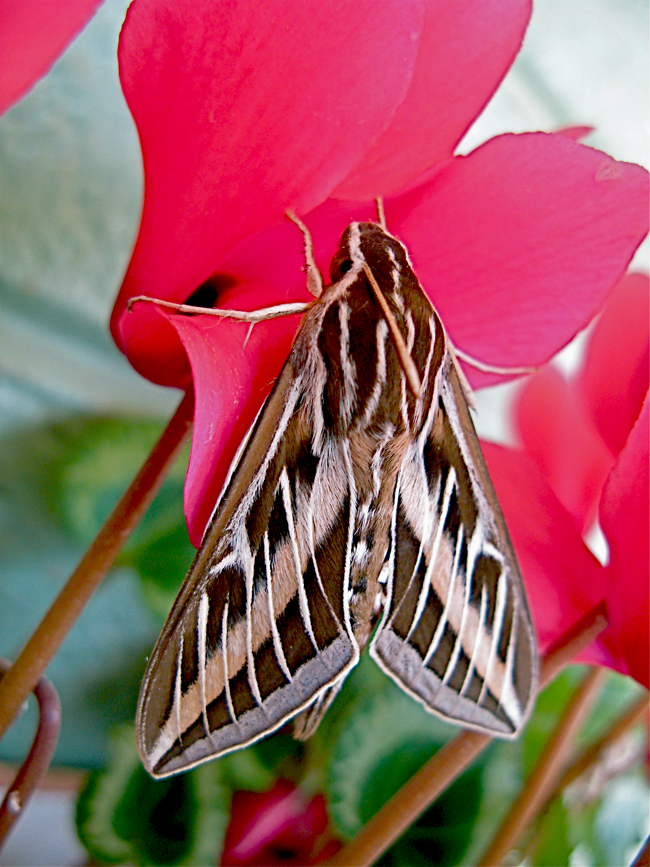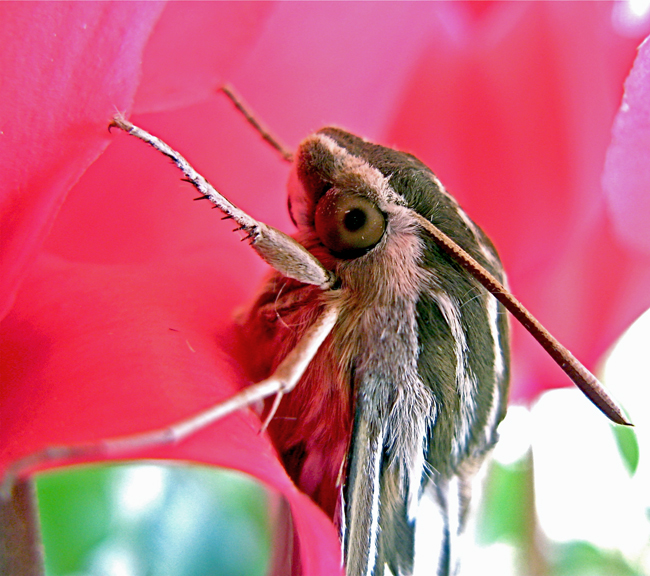Sphinx in pinks
 It’s springtime, and under the fluorescent bulb the front porch metamorphoses into a feeding and mating hotspot. Mantids, huntsmen, sunspiders, cellar spiders, a variety of moths and other jointleggedies and geckos congregate at this arthropodal equivalent of a savannah watering hole to look for love, snacks, and in the case of the mantids, lovesnacks.
It’s springtime, and under the fluorescent bulb the front porch metamorphoses into a feeding and mating hotspot. Mantids, huntsmen, sunspiders, cellar spiders, a variety of moths and other jointleggedies and geckos congregate at this arthropodal equivalent of a savannah watering hole to look for love, snacks, and in the case of the mantids, lovesnacks.
The showy barflies of the moment are the sphinx moths — I believe these are White-lined Sphinxes, Hyles lineata, also known as hummingbird moths — two of whom have been flirting on the front door screen by night and roosting under the eves during the day. Last night one chose the Cyclamen in a wall pot for its dayroost, and was a patient subject for close-ups in the morning. (By the way, the outrageous saturation of the pink cyclamen is not artificially boosted — in fact, I had to tone it down a bit because it actually hurt to look at.)
The sphinges hover at flowers like Evening primrose (which aren’t in bloom yet around the yard) and this hovering habit along  with their large size (nearly 2 inches long) and feathery-looking body covering give them their nickname of hummingbird moths. But look at the portrait on the left — they’ve got big nocturnal eyes, which look more owly than hummery to me.
with their large size (nearly 2 inches long) and feathery-looking body covering give them their nickname of hummingbird moths. But look at the portrait on the left — they’ve got big nocturnal eyes, which look more owly than hummery to me.
Check out another sphinx moth here, the rustic sphinx whose larvæ feed on Desert willow and tecoma.
(Photos A.Shock, be sure to click to enlarge)
